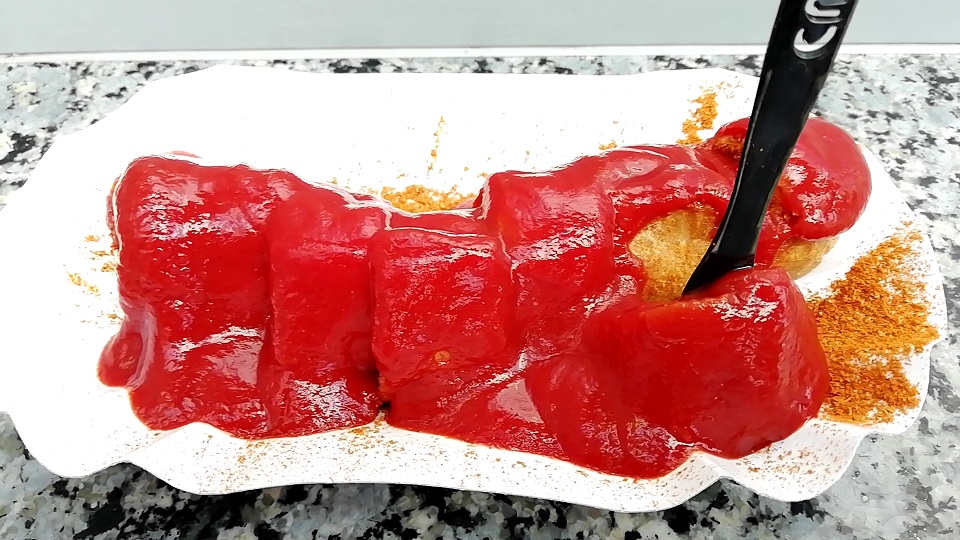
table of contents
Candida Organic Acids test
Organic Acids test results in June 2018
Excerpt from record 26
the first page
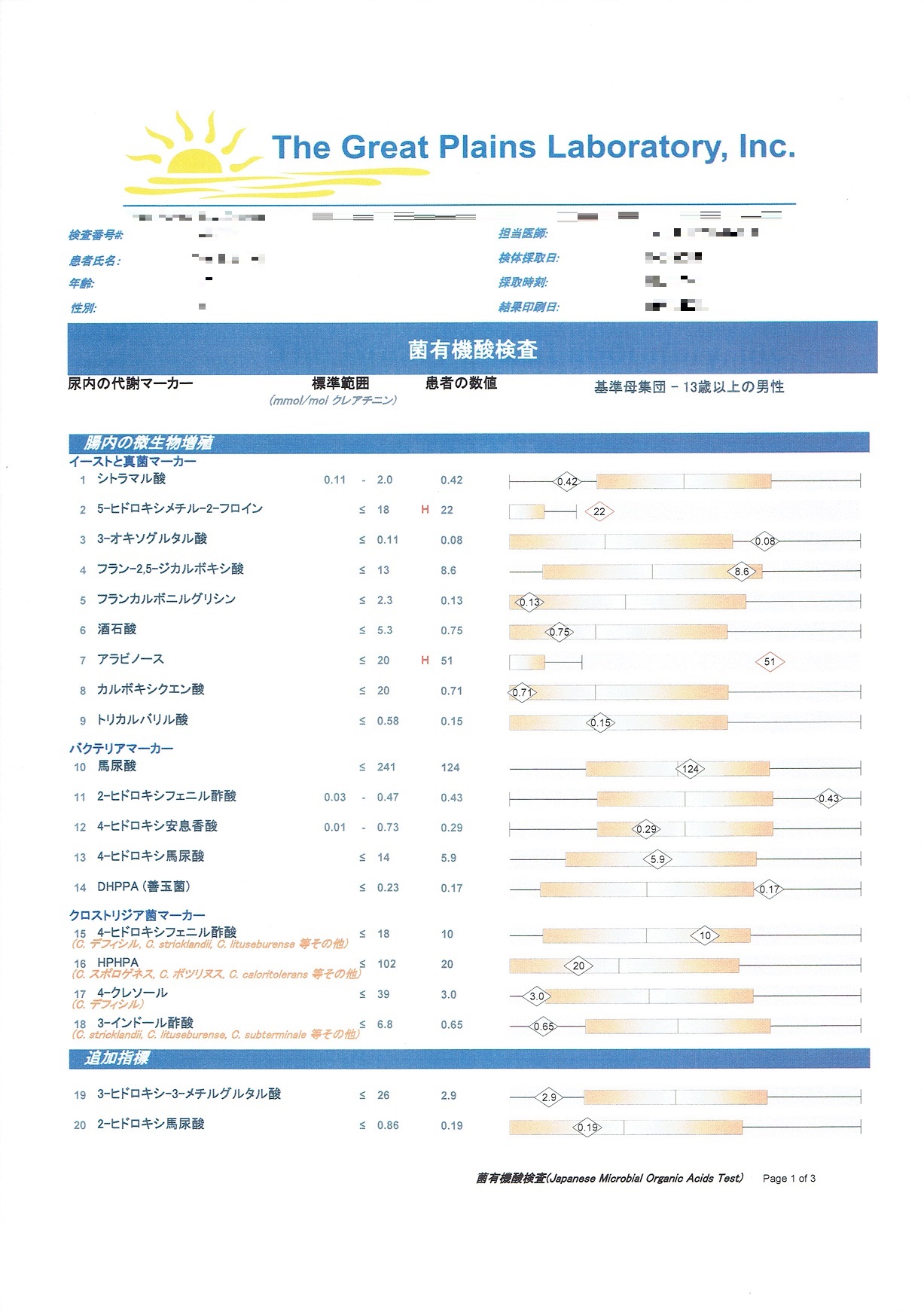
This is the first page of Candida Organic Acids test results.
Bacterial organic acid test
Growth of microorganisms in the intestine
Yeast and fungal markers
1 Citramalic acid
2 5-hydroxymethyl-2-furoic
3 3-oxoglutarate
4 Furan-2.5-dicarboxylic acid
5 Furancarbonylglycine
6 Tartaric acid
7 Arabinose
8 Carboxycitric acid
9 Tricarballylic acid
Bacterial marker
10 Hippuric acid
11 2-hydroxyphenylacetic acid
12 4-hydroxybenzoic acid
13 4-hydroxyhippuric acid
14 DHPPA (good bacteria) 3,4-dihydroxyphenylpropionic acid
Clostridia marker
15 4-hydroxyphenylacetic acid
16 HPHPA 3-(3-hydroxyphenyl)-3-hydroxypropanoic acid
17 4-cresol
18 3-indole acetic acid
Additional indicators
19 3-hydroxy-3-methyl glutaric acid
20 Hydroxy hippuric acid
2nd page (description)
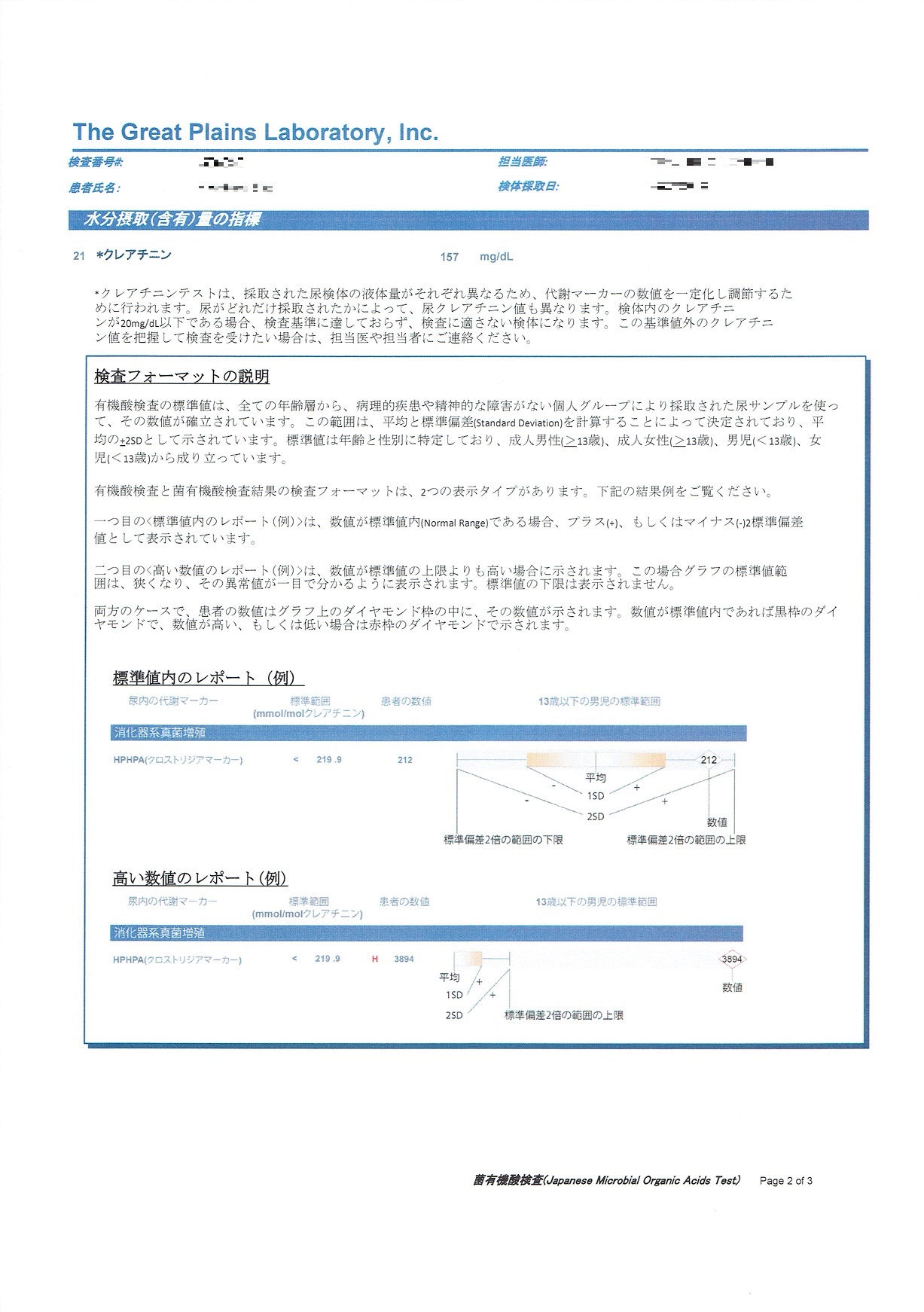
Index of water intake (content)
21 *Creatinine
*Since urine samples collected have different body fluid volumes, the creatinine test is used to stabilize and adjust the number of metabolic markers.
Urinary creatinine levels also vary depending on how much urine is collected.
If the amount of creatinine in the sample is less than 20 mg / dL, the sample does not meet the test criteria and is not suitable for testing.
If you want to test with a creatinine value other than this standard value, please consult your doctor or staff.
Inspection format description
Standard values for organic acid tests are established using urine samples taken by groups of individuals without morbidity or mental illness from all age groups.
This range is determined by calculating the mean and standard deviation and is displayed as ± 25D of the mean.
The standard values are specified by age and sex, and consist of adult males (≧ 13 years old), adult females (≧ 13 years old), boys (<13 years old), and girls (<13 years old).
The new test format for organic acid test and microbial organic acid test result has two display types.
See example results below.
In the first example, when the numerical value is within the standard value (Normal Range), it is displayed as plus (+) or minus (-) 2 standard deviation value.
The second example is displayed when the number exceeds the standard upper limit.
In this case, the reference value range of the graph is narrowed and the abnormal value is displayed so that it can be seen at a glance.
The lower limit of the standard value is not displayed.
In both cases, the patient number is shown in the diamond box on the graph.
If the numerical value is within the standard value, it will be displayed with a black framed diamond, and if the value is high or low, it will be displayed with a red framed diamond.
Report within the standard value (example)
Report outside standard value (example)
3nd page
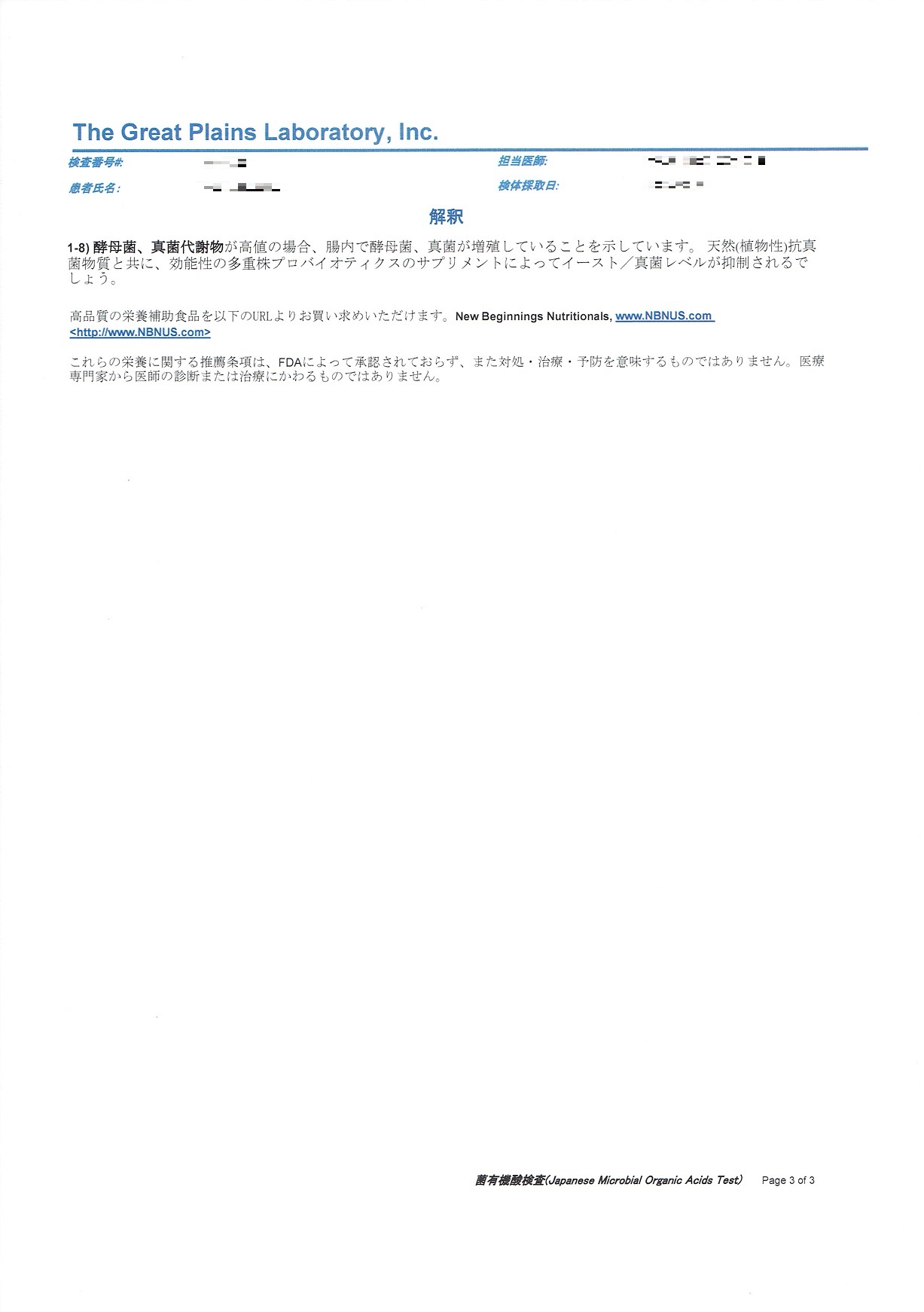
Interpretation
1-8) High levels of yeast and fungal metabolites indicate that yeast and fungi are growing in the intestine.
Yeast / fungal levels will be suppressed by potent multi-strain probiotic supplements along with natural (vegetable) antifungal substances.
You can purchase high quality dietary supplements from the following URL.New Beginnings Nutritionals,www.NBNUS.com<http://www.NBNUS.com>
These nutritional recommendations are not endorsed by the FDA and do not imply coping, treatment or prevention.
It does not replace the diagnosis or treatment of a doctor by a medical professional.
Comparison of test results
The comparison data is the data for October 2015 and June 2018.
The data on the left is October 2015, and the data on the right is June 2018.
Compare 20 items of organic aciduria test.
Numerical values and graphs are displayed separately.
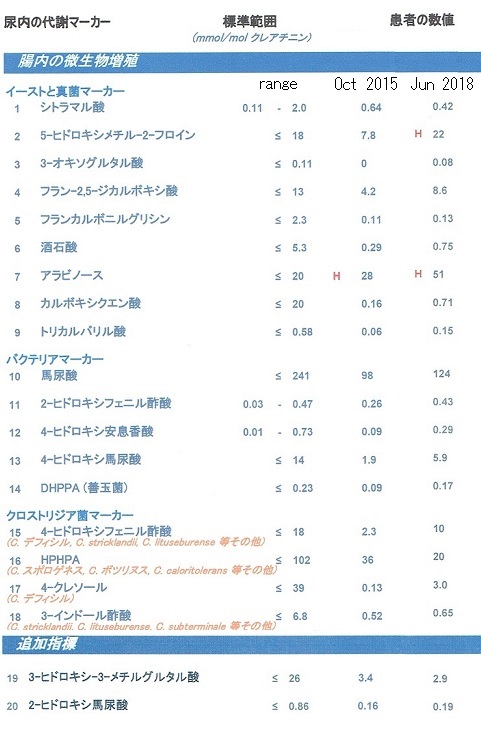
Growth of microorganisms in the intestine
Yeast and fungal markers
1 Citramalic acid 0 64 → 0 42 Go down
2 5-hydroxymethyl-2-furoic 7 8 → H 22 Go up
3 3-oxoglutarate 0 → 0 08 Go up
4 Furan-2.5-dicarboxylic acid 4 2 → 8 6 Go up
5 Furancarbonylglycine 0 11 → 0 13 Go up
6 Tartaric acid 0 29 → 0 75 Go up
7 Arabinose H 28 → H 51 Go up
8 Carboxycitric acid 0 16 → 0 71 Go up
9 Tricarballylic acid 0 06 → 0 15 Go up
Bacterial marker
10 Hippuric acid 98 → 124 Go up
11 2-hydroxyphenylacetic acid 0 26 → 0 43 Go up
12 4-hydroxybenzoic acid 0 09 → 0 29 Go up
13 4-hydroxyhippuric acid 1 9 → 5 9 Go up
14 DHPPA (good bacteria) 3,4-dihydroxyphenylpropionic acid 0 09 → 0 17 Go up
Clostridia marker
15 4-hydroxyphenylacetic acid 2 3 → 10 Go up
16 HPHPA 3-(3-hydroxyphenyl)-3-hydroxypropanoic acid 36 → 20 Go down
17 4-cresol 0 13 → 3 0 Go up
18 3-indole acetic acid 0 52 → 0 65 Go up
Additional indicators
19 3-hydroxy-3-methyl glutaric acid 3 4 → 2 9 Go down
20 Hydroxy hippuric acid 0 16 → 0 19 Go up
There are two items that exceed the standard range.
5-hydroxymethyl-2-furoic, arabinose.
5-Hydroxymethyl-2-furoic was in the standard range in October 2015, but exceeded the standard range in June 2018.
Even so, it was a little beyond the standard range.
The next arabinose exceeded the standard range in both October 2015 and June 2018.
Moreover, the standard range was greatly exceeded in June 2018.
Items other than the two are within the standard range, so there seems to be no problem.